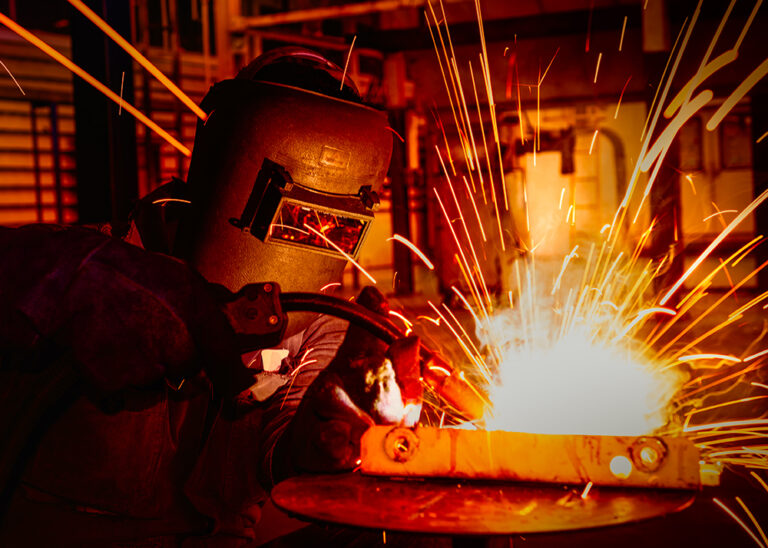The quality of a weld joint is largely determined by whether it is exposed to ambient air. Too much ambient air or moisture in contact with the welding surface during the welding process will result in lower quality welding. To counteract this, shielding gases are used to limit the ambient air, which in turn increases the quality of the weld. The type of gas used as shielding gas often depends on the type of welding being performed and the types of metal being welded together. Argon and argon mixtures are the most common shielding gases used for welding. The mixture must have an accuracy of between ± 1% and ± 5% depending on the customers' specific requirements. The cleaner the gas, the better the result.
Large welding workshops or production units store gases in a gas center and then deliver the gas to the welding equipment via gas lines. By measuring the gas flow in the pipeline system, gas consumption is tracked, which is then compared with the amount of gas delivered. It then becomes clear if there is a leak in the system that leaks out harmful and/or expensive gases. Alternatively, the outgoing line from the gas central is measured as well as an additional measuring point at each gas consumer or at each department that consumes gas. In this way, both leaks can be detected in real time and any basis for internal billing of gas consumption can be easily created. For special gases such as shielding gas, it is important that operators detect leaks early in order to maintain stocks and keep costs down. Inefficiency due to leakage in old or damaged equipment can be detected easily by measuring the gas network, which leads to cost efficiency and in many cases greatly reduced costs.
Depending on the measurement point, main trunk or end user, Kompauto delivers flow measurement and flow regulation for this purpose. Fox Thermal Instruments is one example of flow meters for main stems. Fox Thermal has ATEX classification as standard and has built-in calibration validation to ensure that the calibration of the instrument is within an acceptable level, which is often a decisive factor in internal billing between departments or tenants in an industrial building. For measuring and/or regulating the gas flow at the consumption points, mass flow meters from SUTO iTEC or mass flow regulators from Alicat Scientific are used, for example, in cases where you also want to regulate the gas flow in an automatic process.
As a supplement, solenoid valves are often used to shut off gas lines. It can be a matter of safety shutdown if a flow becomes too high as a result of a leak or deliberate shutdown of part of the gas network during periods of no activity, for example at night. Since conduit networks always leak to a certain extent, it is critical and obvious that the part of the conduit network that is not used must be switched off in order to minimize unnecessary losses of process gas. Shutting down the mains in the event of inactivity also applies to compressed air networks where the compressors do not have to produce air unnecessarily. The control can be carried out through central regulation from a higher-level system or via an integrated timer directly on the valve for operations without a central control system.
Posted by Jonas Lindgren at Kompauto Nordic AB and Kompauto Norway AS. jonas.lindgren@kompauto.com, Mob.+46 70 684 00 01




